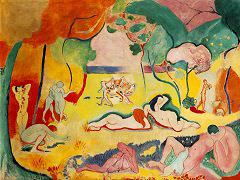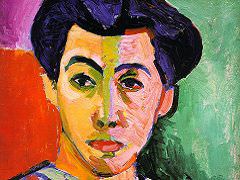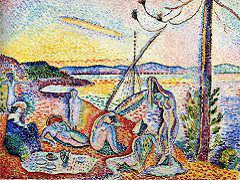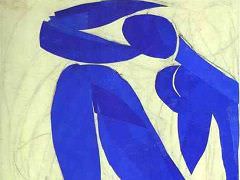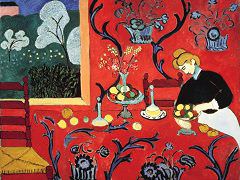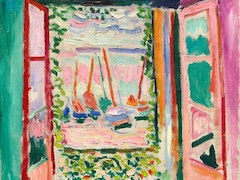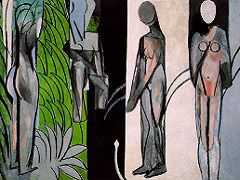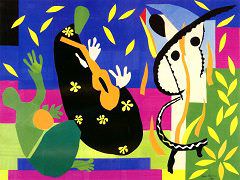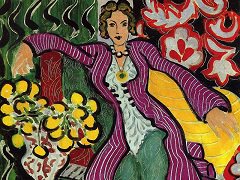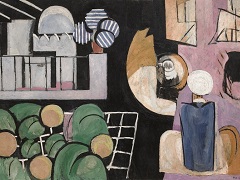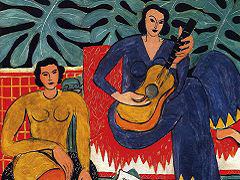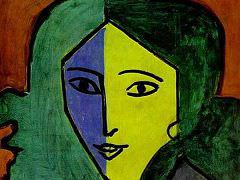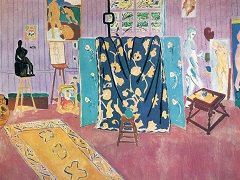The Piano Lesson, 1916 by Henri Matisse
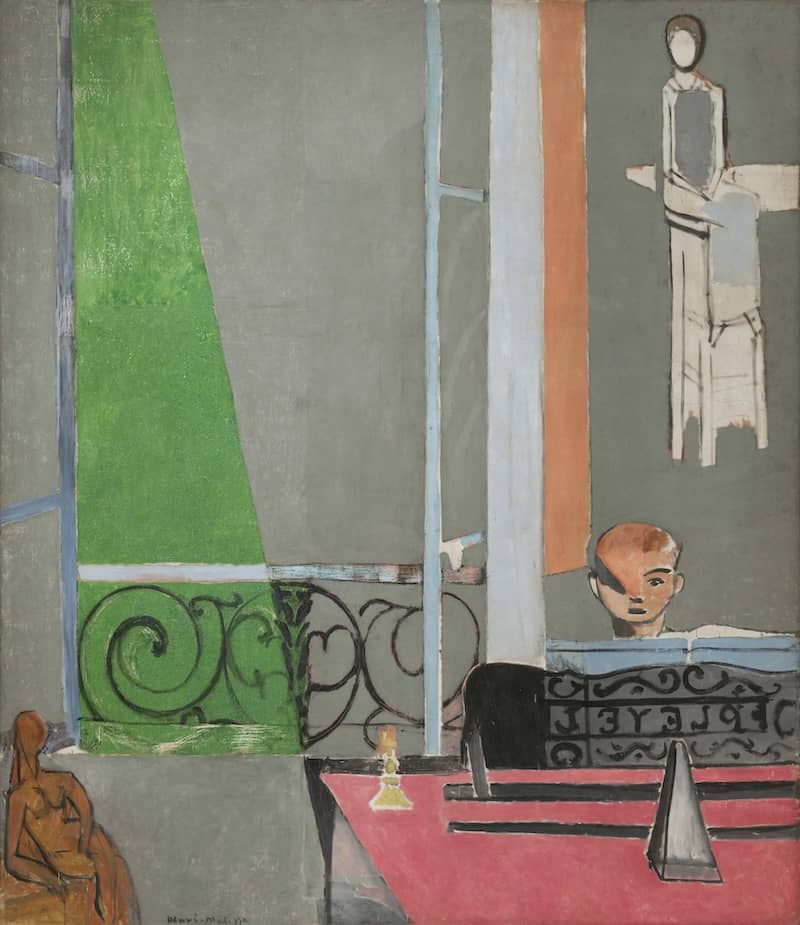
The Piano Lesson depicts the living room of Matisse's home in Issy-les-Moulineaux, with his elder son, Pierre, at the piano, the artist's sculpture Decorative Figure (1908), at bottom left, and, at upper right, his painting Woman on a High Stool. Matisse began with a naturalistic drawing, but he eliminated detail as he worked, scraping down areas and rebuilding them in broad fields of color. The painting evokes a specific moment in time - light suddenly turned on in a darkening interior - by the triangle of shadow on the boy's face and the rhyming green triangle of light falling on the garden. The artist's incising on the window frame and stippling on the left side produce a pitted quality that suggests the eroding effects of light or time, a theme reiterated by the presence of the metronome and burning candle on the piano.
The Piano Lesson is a highly abstract painting, and is important because of its relation to the Cubist grid developed by Pablo Picasso and Georges Braque, because of its biographical aspects, and especially due to its thoughtful iconography (symbolic content).
Matisse has transformed the original painting in order that Raynal play the part of the strict instructor, Matisse often created variations on themes that he had already treated. So, in fact, Matisse has created a painting of a painting and a painting of a sculpture. This suggests that perhaps The Piano Lesson is not only about Pierre and his childhood experiences but more importantly, the act of creation itself. Is Pierre actually a stand in for Henri? After all, music is a common metaphor for the visual arts. Is Matisse then saying that art is the result of both sensual creativity (the sculpture) and strict discipline (the painting) - is the metronome that swings between the two, a mediator? And then what of the odd inclusion of the carved music stand which contains the brand of the piano, "PLEYEL" (which is read backwards as we see it)?

